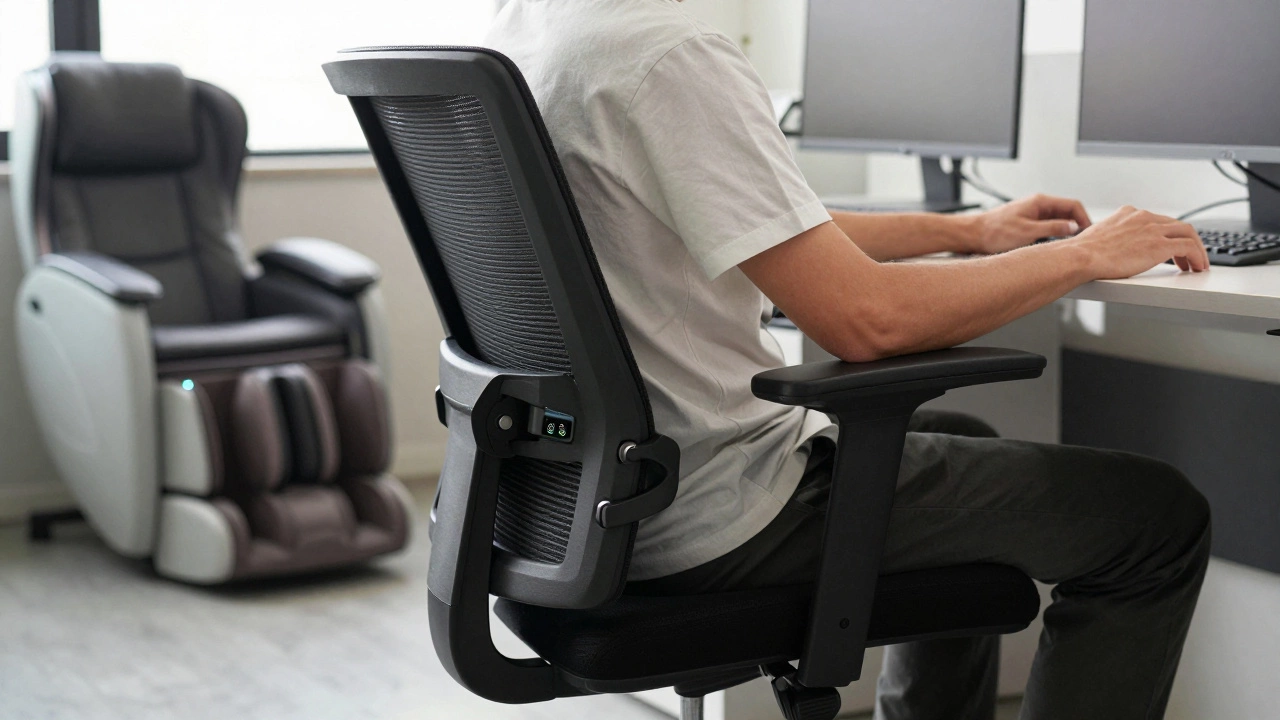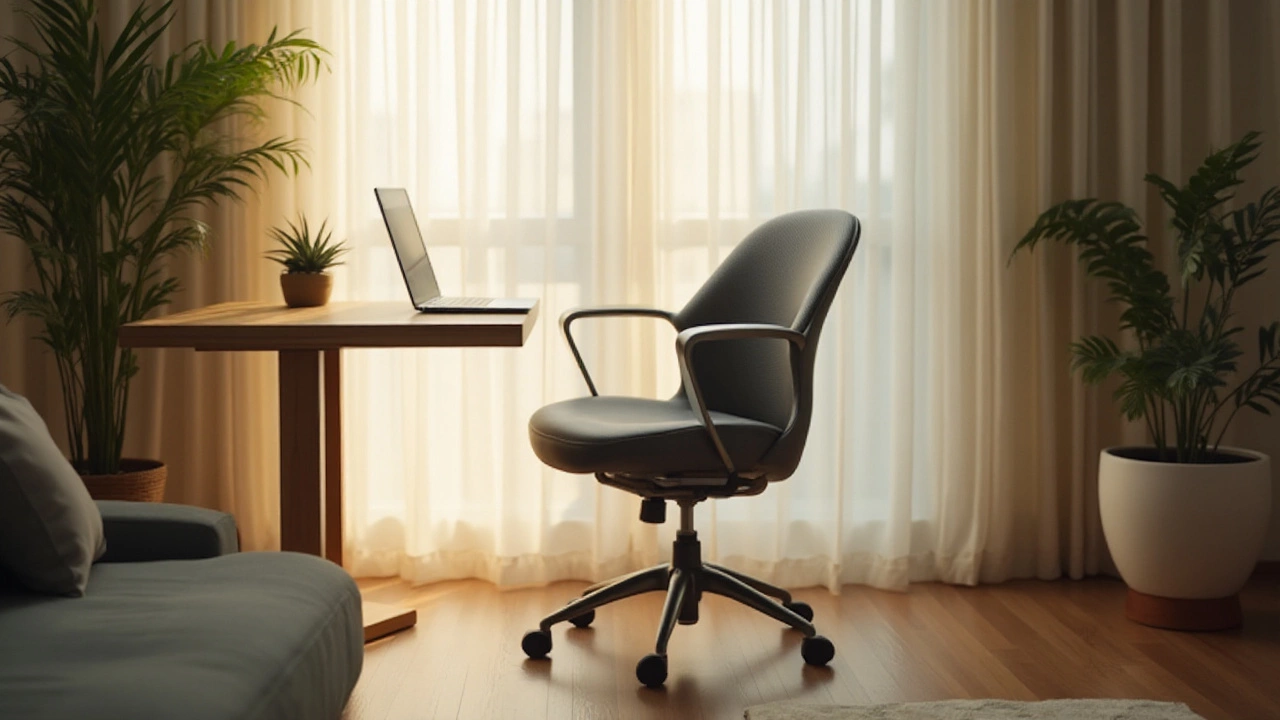Office Chairs: How to Pick the Right One for You
Finding an office chair that feels good and looks good can make a big difference in how you work. You spend hours sitting, so a chair that supports your back, lets you move easily, and matches your style is worth the effort.
What Makes a Chair Comfortable?
First, look at the seat height. You should be able to place your feet flat on the floor with knees at a right angle. Most chairs have a lever to raise or lower the seat – try a few positions before you decide.
Next, check the backrest. A curved back that follows the natural shape of your spine helps prevent slouching. If the chair offers lumbar support, adjust it so it sits just above the small of your back. A good backrest also tilts, so you can lean back when you need a break.
Armrests are another comfort factor. They should be soft enough to rest on but not so high that they lift your shoulders. Adjustable arms let you line them up with your desk height, which reduces strain on your neck and shoulders.
Choosing the Right Style and Materials
Office chairs come in many looks – from sleek mesh backs to plush leather cushions. Mesh seats keep you cool in warm rooms, while leather feels luxurious and is easy to wipe clean. Think about the vibe of your office: a modern tech space often uses mesh, whereas a home office might suit a softer fabric.
Durability matters too. Look for a sturdy base with five legs made of steel or strong plastic. Wheels should roll on the floor you have – carpet wheels are softer, hard‑floor wheels are smoother.
Finally, set a budget. You don’t need a million‑dollar chair to get good support. Mid‑range models with adjustable features give great value, while a high‑end chair may have extra padding and premium materials if you’re willing to spend more.Once you bring the chair home, take a few minutes each day to adjust the height, tilt, and lumbar settings. Small tweaks keep the chair working for you as your tasks change.
To keep the chair looking fresh, wipe the surface with a damp cloth every week. If you have a fabric seat, a vacuum brush helps remove dust. For leather or faux‑leather, use a leather cleaner once a month to prevent cracks.
Arranging your chair with the rest of your workspace also boosts comfort. Keep the monitor at eye level, and place your keyboard so your elbows stay close to your body. This set‑up, combined with a well‑chosen chair, reduces strain and lets you stay focused longer.
In short, pick a chair that fits your height, supports your back, matches your office style, and fits your budget. Adjust it often, maintain it regularly, and you’ll notice the difference in how you feel at the end of the day.
What Is the 80/20 Rule Strategy for Office Chairs?
The 80/20 rule for office chairs means 80% of comfort comes from just 5 key features: lumbar support, seat depth, armrests, height adjustment, and a stable base. Skip the extras and focus on these to save money and protect your back.
5 Levels of ADHD: How Office Chairs Can Make a Difference
Curious about how ADHD shows up at work? This article breaks down the five levels of ADHD and explains how the right office chair can help with focus and comfort. You'll get real tips for choosing a chair that matches your needs no matter what level you're dealing with. Learn what to look for to support better posture and attention, especially during long workdays. Get concrete ideas you can use right away to boost your productivity and feel better at your desk.
Unmasking the Dark Side of ADHD: What You Need to Know About Office Chairs
ADHD can significantly impact workplace comfort and productivity, especially when it comes to something as crucial as choosing the right office chair. This article explores the connection between ADHD and seating preferences, highlighting how discomfort can exacerbate symptoms. It also delves into practical tips for selecting office chairs that cater to those with ADHD. Understand the importance of ergonomics and design for maintaining focus and comfort.
Office Chairs That Wreck Your Posture: What to Avoid
Picking the right office chair can make or break your posture. Poorly designed chairs not only cause discomfort but may lead to serious long-term health issues. This article digs into common chair designs that harm posture and offers tips on selecting better options. Avoid the pitfalls of bad seating with practical insights and learn to spot red flags before purchasing.
Benefits and Drawbacks of Removing Office Chair Arms
Removing the arms from your office chair might seem a small alteration, but it can have significant effects on both comfort and productivity. This decision can impact ergonomics, posture, and potentially reduce the space required at your workstation. By understanding the potential advantages and disadvantages, individuals can make informed choices that suit their work needs. Exploring insights into adjusting your office setup can lead to a more comfortable and efficient work environment.
Essential Insights on Office Chair Replacement Frequency
Office chairs are an integral part of the workplace environment, significantly impacting comfort and productivity. This article explores how often these chairs should be replaced based on factors like usage, quality, and ergonomic needs. It provides practical tips on identifying signs of wear and tear and choosing the right time for replacement. By understanding these elements, businesses can ensure a comfortable and efficient workspace.
Examining the Safety of IKEA Office Chairs
IKEA office chairs are known for their modern design and affordability, making them a popular choice for home and workplace settings. This article explores the safety features and considerations of IKEA office chairs, including ergonomic benefits and potential risks. By understanding how these chairs are constructed and designed, consumers can make informed decisions when selecting seating options. We also provide tips on how to maintain these chairs for optimal safety and comfort.











